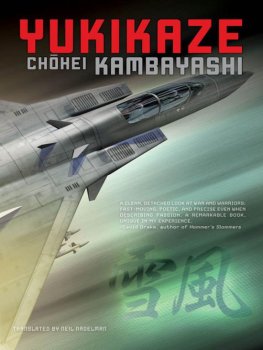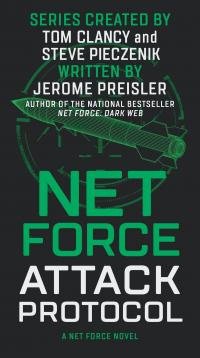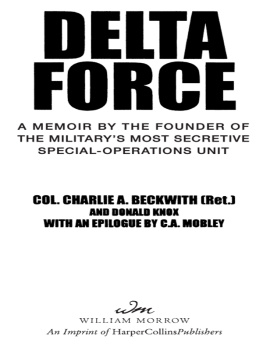

Yukikaze
2002 Chhei Kambayashi
Originally published in Japan by Hayakawa Publishing, Inc.
All rights reserved.
Cover illustration by Shoji Hasegawa
English translation 2009 VIZ Media, LLC
No portion of this book may be reproduced or transmitted in any form or by any means without written permission form the copyright holders.
HAIKASORU
Published by
VIZ Media, LLC
295 Bay Street
San Francisco, CA 94133
www.haikasoru.com
ISBN 978-1-4215-3986-7
Haikasoru eBook edition, October 2010
CONTENTS
FOREWORD The FAF and the Special Air Force
VIII Super Phoenix
From The FAF and the Special Air Force
in The Invader, by Lynn Jackson (15th edition)
AN OBSERVER LOOKING at historical maps of the world would soon note that in nearly every age places free from conflict are the exception, not the rule. Even today, areas of strife paint the map red, staining it with blood spilled in confrontation. The history of mankind is a record of warfare. Humans have fought against other humans and even against nature itself. This remains unchanged, the same now as it was then.
Yet, when comparing the current world map to the maps of the past, our theoretical observer would be able to see one red mark in the Antarctic indicating a site possessing far greater significance than any battlefield. Being such a small mark its easy to overlook, and in point of fact most people these days seem to have forgotten about it. However, it is there. The site is at a point on the Ross Ice Shelf a thousand kilometers from Earths south pole, at approximately longitude 170 west, and is barely five hundred meters in diameter.
This is the hyperspace corridor that we know as the Passageway, the portal that the aliens called the JAM used in their attempted invasion of Earth. The Passageway looks like a gigantic spindle, with a maximum diameter of just under three kilometers and a height of over ten, its lower end seemingly driven right into the ice shelf. When conditions are right you can see it with the naked eye, an impossibly huge cloud of mist that resembles nothing so much as an enormous missile shot into the ground from the heavens.
Its not clear exactly how long the Passageway has been there. The human race first learned of its existence thirty years ago, when the JAM came swarming out of it to launch their first strike. Later, during our counterattack, we traveled back through the Passageway, and when the Earth Defense Forces reconnaissance units emerged on the other side they discovered a hitherto unknown world. Behind them towered the huge white cloud that pierced our world. Around them spread dense forests. To this day the planet Faery has hid its many mysteries well; we have made little progress in learning about its geography or ecosystem, or even which star system it is in.
If, say, a laser were to be fired through the Passageway from Earth, the beam would pass through cleanly, stretching into Faerys airspace as though fired from within the Passageway. The mist itself is not the Passageway but rather encloses a separate space that exists within it. It may be the result of some function of the Passageway. Or perhaps its an illusion of sorts. The JAM, however, are not an illusion. Mankind has fought them. It fights them even now. The only difference is that the battlefield has moved from Earth to the planet Faery. The threat of the JAM is still there.
The Earth Defense Forces main combat body on the planet is the Faery Air Force, referred to more commonly as the FAF. The FAFs units are arrayed in a roughly even distribution around the Faery terminus of the Passageway and are organized into six enormous bases: Sylvan, Brownie, Troll, Siren, Valkia, and Faery, with Faery Base acting as the general headquarters over all. As the key base there, it is by far the largest in scale.
At the current time the FAFs most powerful fighter plane is a twin-engine, all-condition tactical fighter known as the Sylphid. It is a high-performance machine boasting advanced electronic armaments and engines that possess a multitude of improvement modifications to optimize them for the skies of Faery. There are not that many Sylphids, owing to their high cost, but the FAF has made great advances in their production processes and is now building more of them.
Of the few original Sylphids produced, thirteen of them have been modified for tactical reconnaissance. These thirteen planes have been equipped with onboard computers that are even more highly advanced than the ones used in the ordinary fighters. This variant of Sylphid is known as the Super Sylph, and while it looks like the other Sylphids it is a completely different beast. In essence, its a supercomputer with wings and high-output engines.
These thirteen tactical electronic warfare and reconnaissance Sylphids have been assigned to the 5th Squadron of the FAFs Special Air Force. When you look at the official list of the FAFs corps, divisions, and units, the 5th Squadron seems to just be one unit of an airwing attached to the Tactical Combat Group of Faery Base. In reality, however, it has its own independent headquarters and exists as a corps of its own. Now, when one mentions the Special Air Force, one is in fact referring specifically to the 5th Squadron. Its formal unit designation is SAF-V; however, this is really used only in official documents. Within the Faery Air Force, it is commonly called just the SAF.
When the FAF was formed, the SAF wasnt regarded as a particularly vital unit. However, the staff officers in the FAF command had to admit the need for more advanced and accurate tactical combat intelligence. Thus it was not by accident that the SAF, which was charged with overseeing the collection of all frontline electronic intelligence, was given these top-ofthe-line Sylphids. Indeed, their existence is vital. High-speed computers with the most advanced processing capacities are now essential to the war against the JAM: without these computers, we wouldnt be able to fight them. The central computers aboard the Super Sylphs that collect combat activity data are extremely powerful: no other fighter plane has such advanced, real-time data analysis capabilities. These onboard computers are directly interfaced with the strategic and tactical computers protected deep under Faery Base in the SAFs mission control room. In that respect it would be safe to say that the fighters are moving components of a larger, fixed supercomputer.
The SAFs digital technology is the most advanced of all the FAF combat units. And the single, overriding order of the unit is: come back alive, at any cost. The SAFs fighters greedily collect every scrap of data on the front line, record it into a combat intelligence file, and then return to base. Easily disrupted wireless transmission of the data is used only in emergencies.
The thirteen Super Sylphs attached to the unit are never launched together at the same time. Always just one, or at the very most two, sortie to follow the other aircraft. And even if their fellow fighters are being decimated, they can offer no support; they must simply collect the combat intelligence and return to base. To see this duty through, the Super Sylph is equipped with external fuel tanks and an early warning radar system as good as a reconnaissance aircrafts, all to protect itself and the data files it carries. And for that one purpose, it also carries powerful weaponry.
Given the psychological strain of having to watch their comrades die while still remaining emotionally disengaged, the pilots who perform this duty need hearts as cold as a computer. The pilots of the SAF evidently take a certain satisfaction in this requirement, and individuals with special personalities outside the range of normal human standards are selected for this duty. These men put more faith in their machines than in other people and can fly their planes with perfect skill. In a way, they are yet one more combat computer, but organic in nature, loaded aboard the Sylphids to carry out a heartless duty.
Next page









